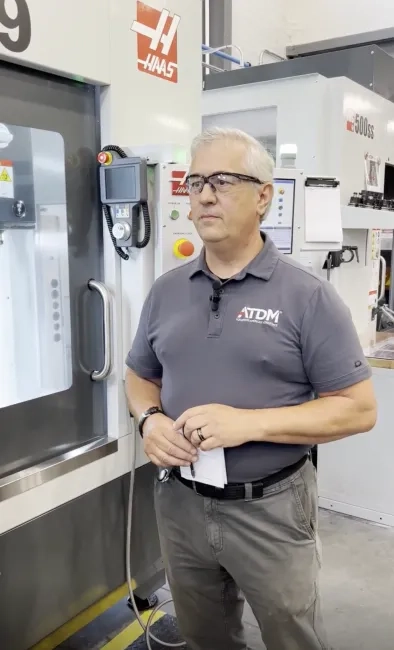
In the world of manufacturing, Computer Numerical Control (CNC) machining is a game-changer, blending the precision of computers with the art of manual machining. It’s essentially manual machine work done through a computer environment. Instead of relying on manual control, CNC machines automate the process, using computer programs to craft parts with high precision.
The Learning Process
Jim Hook, a CNC machining instructor at ATDM, explains how students learn to create a variety of parts, from simple blocks to complex components like ship pulleys. “We use CNC machines and lathes to produce parts that serve the Navy, Air Force, and other armed services,” says Hook.
This variety ensures that students gain experience with both straightforward and intricate machining tasks.
When students begin, they start with no prior knowledge of CNC machining. Hook emphasizes the importance of teaching students how to write G-code, a universal language for machines.
“We teach them how to program it based on a drawing,” he says. “This code instructs the machine on how to create the desired part.”
Students must input this code and verify their results through a series of checks.
From Code to Creation
Once the G-code is entered, the machine takes over.
“The machine selects tools, cuts the material with an end mill, and removes material to shape the part according to the drawing,” describes Hook.
This operation involves maintaining tool temperature with coolant and recycling leftover material, ensuring both efficiency and sustainability.
Safety and Precision
Safety is paramount in CNC machining.
“Machines will not run with the door open, ensuring a safe working environment,” says Hook.
Inside the machine, components like the spindle and vise play crucial roles in holding and cutting the material accurately.
Mathematical Skills
Hook asserts that a solid understanding of math is essential for CNC machining. Basic geometry and trigonometry are crucial for accurately setting up and programming the machine to meet precise specifications.
Overcoming Challenges
Hook acknowledges that not every student gets it right on the first try.
“The number of students who get it right the first time is low,” he admits. “However, with practice and guidance, most students master the process within a few weeks.”
The ATDM curriculum enforces rigorous checks and feedback to help students refine their skills during their training.
CNC machining is a blend of technology and craftsmanship, and programs like ATDM’s are crucial in preparing the next generation of machinists. As Hook illustrates, mastering CNC machining involves understanding both the technical aspects and the art of precision, setting students up for success in the high-tech industry that is maritime manufacturing.
To learn more about the CNC Machining program at ATDM, visit our class information page.
